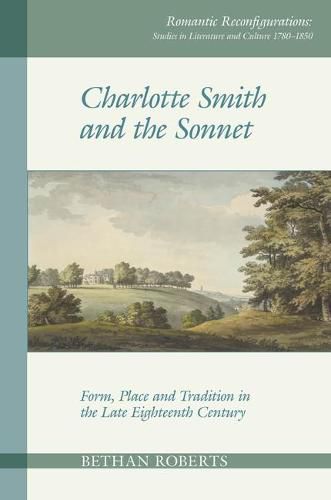Readings Newsletter
Become a Readings Member to make your shopping experience even easier.
Sign in or sign up for free!
You’re not far away from qualifying for FREE standard shipping within Australia
You’ve qualified for FREE standard shipping within Australia
The cart is loading…






An Open Access edition of this book is available on the Liverpool University Press website and the OAPEN library.
This book offers the first full-length study of Charlotte Smith’s Elegiac Sonnets and clarifies its ‘place’ - in multiple ways - in literary history as a work celebrated for ‘making it new’, yet deeply engaged with the literary past. It argues that Smith’s sonnets are constituted by three intertwined concerns: with tradition, place and the sonnet form itself, whereby the subjects of Smith’s sonnets - across birds, rivers, the sea, plants and flowers - are bound up with the literary context in which she wrote. Charlotte Smith and the Sonnet shows that Smith’s verse engages more deeply with tradition than has hitherto been realised and revises our understanding not only of Smith’s career but also of the sonnet in eighteenth-century England. The book also illuminates Smith’s place in posterity, as a popular poet - influencing figures ranging from Wordsworth and Coleridge to Constable - who was subsequently obscured in literary history. It reveals the complex processes underpinning Smith’s reception and paradoxical position from the late eighteenth century to the present day, and shows that the appropriation of place itself was an important way in which aspects of literary tradition have been negotiated and understood by Smith, her predecessors, contemporaries and successors.
$9.00 standard shipping within Australia
FREE standard shipping within Australia for orders over $100.00
Express & International shipping calculated at checkout
An Open Access edition of this book is available on the Liverpool University Press website and the OAPEN library.
This book offers the first full-length study of Charlotte Smith’s Elegiac Sonnets and clarifies its ‘place’ - in multiple ways - in literary history as a work celebrated for ‘making it new’, yet deeply engaged with the literary past. It argues that Smith’s sonnets are constituted by three intertwined concerns: with tradition, place and the sonnet form itself, whereby the subjects of Smith’s sonnets - across birds, rivers, the sea, plants and flowers - are bound up with the literary context in which she wrote. Charlotte Smith and the Sonnet shows that Smith’s verse engages more deeply with tradition than has hitherto been realised and revises our understanding not only of Smith’s career but also of the sonnet in eighteenth-century England. The book also illuminates Smith’s place in posterity, as a popular poet - influencing figures ranging from Wordsworth and Coleridge to Constable - who was subsequently obscured in literary history. It reveals the complex processes underpinning Smith’s reception and paradoxical position from the late eighteenth century to the present day, and shows that the appropriation of place itself was an important way in which aspects of literary tradition have been negotiated and understood by Smith, her predecessors, contemporaries and successors.